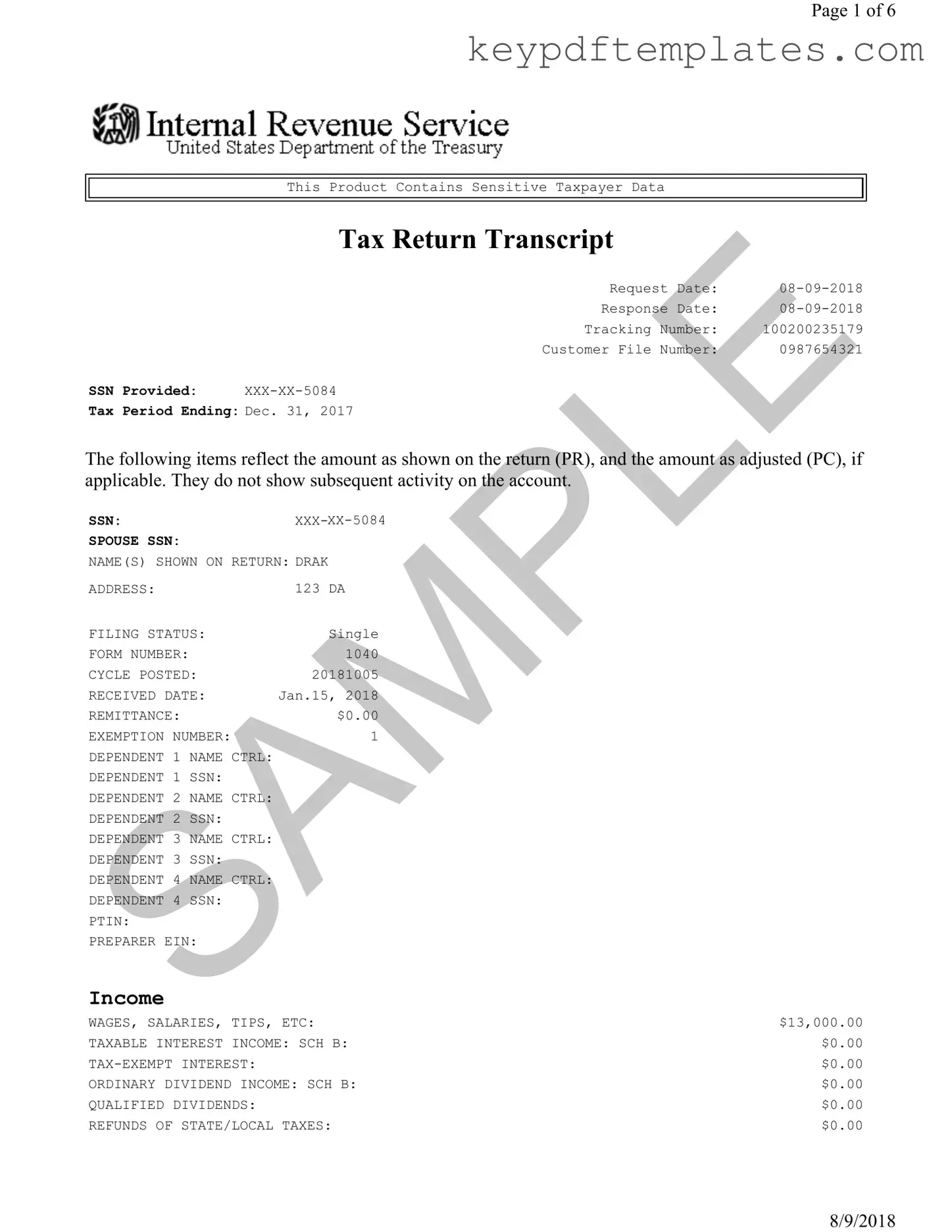Get Sample Tax Return Transcript Form
The Sample Tax Return Transcript form provides a detailed summary of a taxpayer's income, deductions, and tax liabilities for a specific tax period. This document is crucial for individuals seeking to verify their tax information, apply for loans, or resolve discrepancies with the IRS. Understanding its components can help taxpayers ensure accuracy and compliance in their financial reporting.
Modify Document Online
